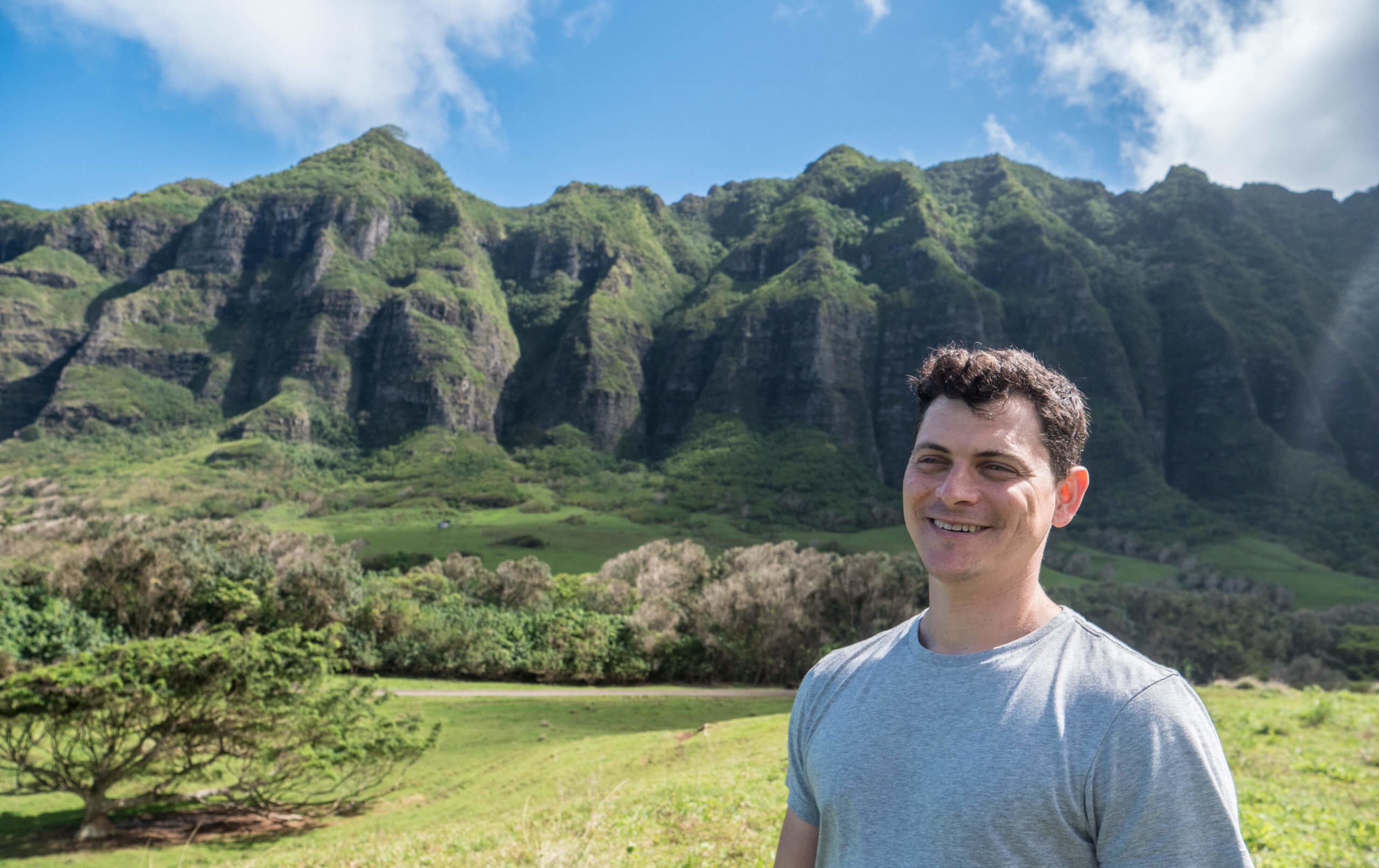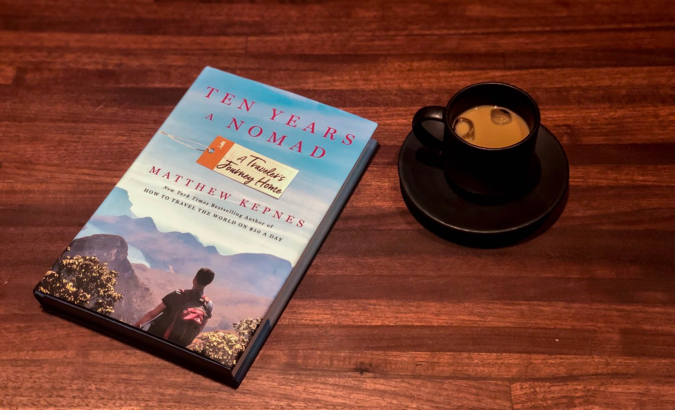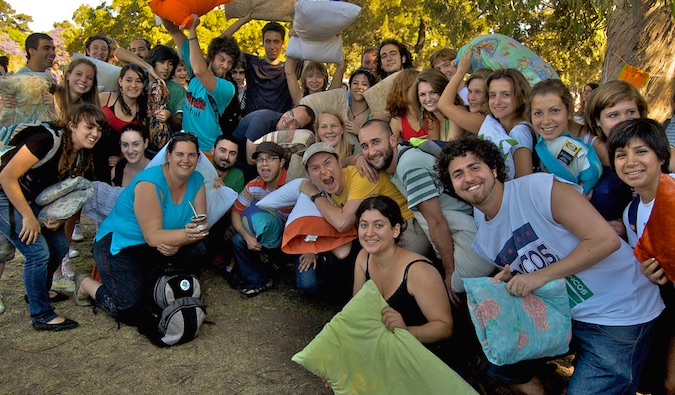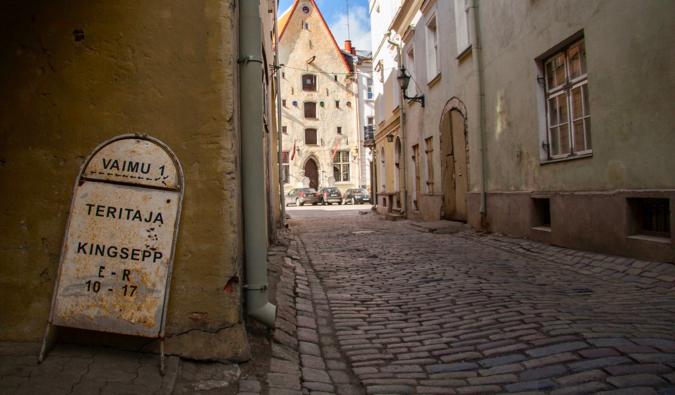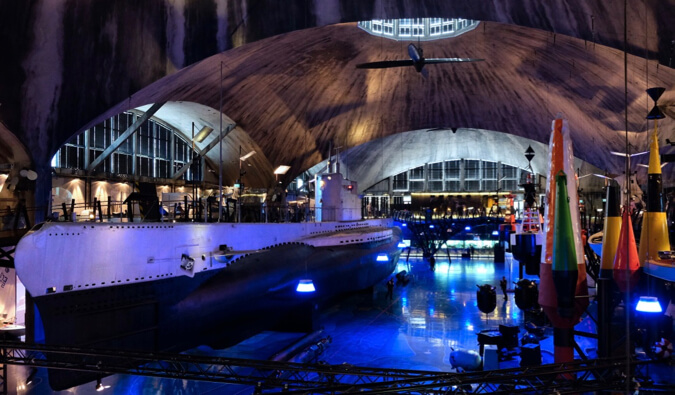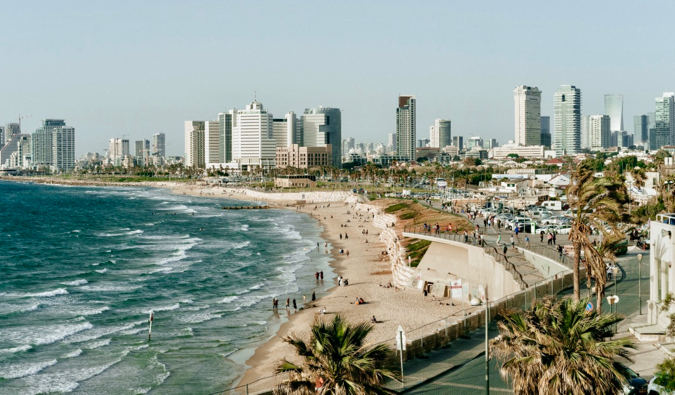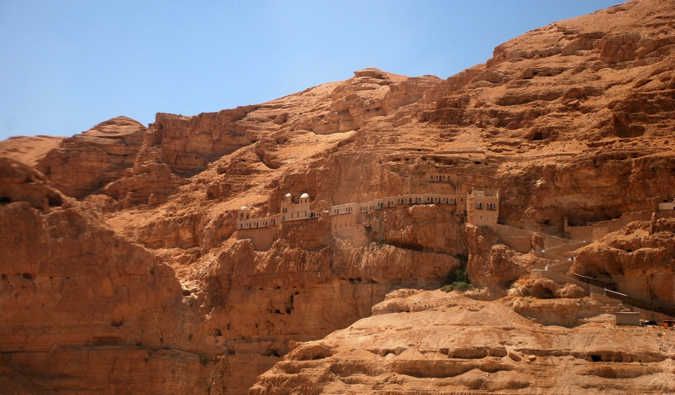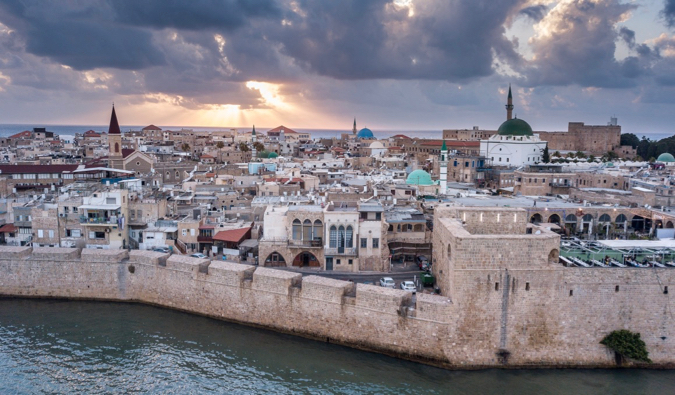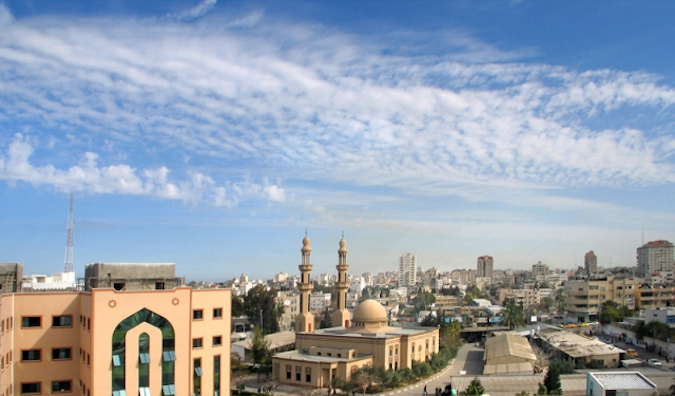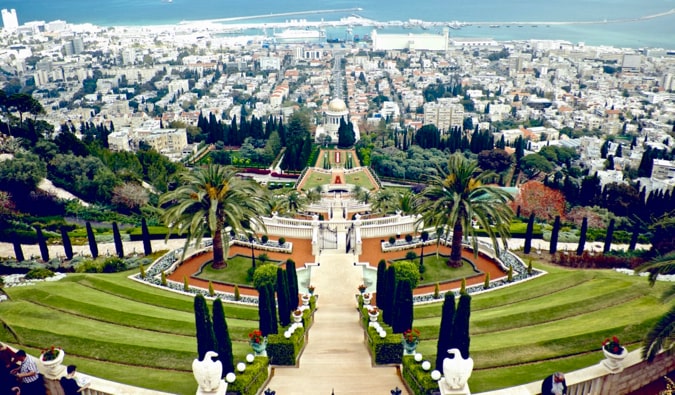
Updated: 03/24/20 | March 24th, 2020
I loved visiting San Francisco from the start. It’s a city home to hippies, techies, artists, immigrants, students, and everyone in between. There’s incredible music, wold-class food for all budgets, some of the BEST Asian food in the country, parks galore, and amazing bohemian vibe to it.
With so many diverse influences, it’s no surprise that San Francisco has evolved into a world-class city that has a ton of amazing things to see and do.
Personally, I love visiting San Francisco for the food. It’s home to some of the best Asian and Mexican food in the country (as well as some incredible cafes).
But there is also much more to see here too. And just because it’s an expensive place to live doesn’t mean a visit has to break the bank either.
To help you plan your trip, here are the best 28 things to see and do in San Francisco
1. Take a Free Walking Tour
The first thing I do whenever I arrive in a new destination is to take a walking tour. It’s the best way to get the lay of the land, see the highlights, and ask your questions to an expert local guide. Free Tours By Foot has a few different FREE options available covering different areas of the city. (Just make sure to tip your guide)
If you want something more in-depth, there are also plenty of paid tours you can take. Take Walks is my go-to walking tour company and they offer some interesting tours around the city. If you want to really learn a lot (while having fun), book a tour with them!
2. Walk the Golden Gate Bridge

There is no question that the iconic Golden Gate Bridge is one of San Francisco’s most famous landmarks. Opened in 1937, it’s arguably the most-photographed bridge in the world. At its inception, it was both the longest and the tallest suspension bridge in the world, spanning 4,200 feet (1,280m) long and standing 746 feet (227m) tall.
You can walk across the bridge (which I recommended) or just stare at it from every angle and snap your own iconic photos. If you have time, make your way to the Golden Gate National Recreation Area. It has a waterfront promenade, sweeping views of the bridge, and a few easy hiking trails.
3. Visit Crissy Field
This park is located near the bridge and makes for a nice follow-up. It has a beach, some restaurants, piers where you can see locals fishing, and plenty of green space to relax. It offers some sweeping views of the harbor, making it a laid-back place to come in the summer to have a picnic, lounge in the sun, and watch life go by.
4. See The Palace of Fine Arts
The Palace of Fine Arts is a Roman-style remnant of the 1915 Panama-Pacific International Exposition (a world’s fair held in San Francisco). The outdoor rotunda and its lagoon are another one of the city’s most photographed sights. It’s also a fun social destination where you can bring friends to play giant Jenga, cornhole, ping pong, and other games. The city often has events here.
601 Lyon Street, +1 415-608-2220, palaceoffinearts.com. Open Tuesday-Sunday from 10am-5pm. Admission is free (some events charge admission).
5. Wander Fisherman’s Wharf and Pier 39
The wharf was originally dominated by Italian immigrants who helped popularize the city’s fish market. To this day, you can watch fishermen at work in Fish Alley (the main street where the fishermen work). If you want to try some of the mouthwatering seafood that San Francisco is famous for, I sugged Waterbar and the Anchor Oyster Bar.
Pier 39 is touristy but it’s also a fun way to spend an hour or so. There are buskers, tacky souvenir shops, arcades, an aquarium, and tons of overpriced restaurants (so avoid eating here).
6. Explore Alcatraz
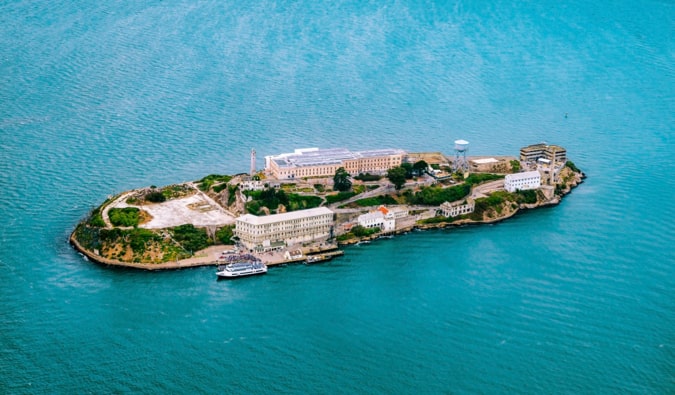
Alcatraz is probably the most famous (or infamous) prison in America. From 1934-1963, it housed the country’s most notorious criminals (criminals like Al Capone). In its 29 year history, not a single prisoner successfully escaped (or so they say). After its closure, it became a national landmark. Visitors can explore the island, learn about the prison and what life was like as an inmate, and tour the interior. It gets very busy in the summer so be sure to book ahead.
+1 415-981-7625, alcatrazcruises.com. Tours run daily year-round and cost $39.90 USD which includes an audio tour.
7. Take a Day Trip to Berkeley
Located just 20 minutes across the bay by car, Berkeley is home to music, hippies, students, and the University of California – Berkeley (30% of the city’s population go to school here). You can take a tour of the campus (self-guided or guided), hike up the Berkeley Hills, or shop on Fourth Street (the main thoroughfare). You’ll also find lots of vegan and vegetarian restaurants, street performers, and eclectic shops to browse.
8. Hang out in the Mission
For an amazing view of the city, head to Dolores Park in the Mission District. If you’re a history buff, don’t miss the Misión San Francisco de Asís (Mission Dolores). Founded in 1776, it’s the oldest surviving structure in the city and home to the only cemetery within city limits. It’s the structure that gives this part of town its name.
The Mission District is also a fun place to spend a night out. The district has tons of great Mexican restaurants as well as lively bars and clubs. Grab a burrito at Taqueria Cancún or Papolete, or visit one of the cocktail bars on 16th (Dalva is good).
9. See Lombard Street
This is the world’s windiest street. Surrounded by gardens and flowers, it’s made up of eight hairpin turns because, during the 1920s, people in San Francisco were beginning to drive around in automobiles. However, many of the city’s famous hills were too steep to navigate. The idea of using a curved street to help vehicles move downhill was embraced and the hill’s slope went from 27% to 16%. Now you can watch the cars and bikers navigate the sharp turns as tourists gawk at them.
10. Visit Coit Tower
Perched atop Telegraph Hill, this art deco tower was built in 1933. Standing 180-feet tall (55m), it’s home to over 25 murals and offers a panoramic view of the city. The murals here were painted in 1934 by local artists and depict life in San Francisco during the Depression. The tower became a San Francisco Designated Landmark in 1984 and was added to the National Register of Historic Places in 2008.
1 Telegraph Hill Blvd, +1 315-249-0995,sfrecpark.org/destination/telegraph-hill-pioneer-park/coit-tower. Open daily from 10am-5pm (6pm in the summer). Admission is $6 USD for city residents and $9 USD for visitors.
11. Eat in Chinatown
This is the biggest Chinatown in the United States (and it’s the second most famous, after New York City. Chinese immigrants first came to the West Coast in the 1850s and set up shop in San Francisco. Due to racial segregation, this neighborhood became predominantly Chinese and remained so even after segregation ended.
It’s one of the best places in the city to eat and you can find some incredible dim sum here. There are also lots of great teahouses, bars, souvenir stalls, and fortune cookie makers.
To really learn about the area, its history, and its people, take a walking tour with Take Walks. They’re my go-to walking tour company because they use expert local guides and their tours are always fun and educational.
12. Ride the Cable Cars
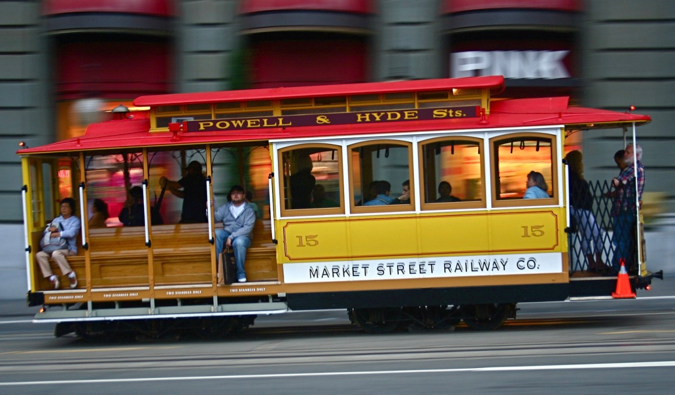
No visit to San Francisco is complete without riding on a cable car. The cable car system in San Francisco is the last manually-operated system in the entire world. Of the 22 lines that were originally created in the 19th century, only three are still in operation. Since there is limited seating (and since they are one of the biggest tourist attractions in the city) waits can be long. Make sure you plan ahead (try to go during a weekday when there are fewer visitors). Tickets are $7 USD.
13. Go on a Harbor Tour
For a completely different look at the city, take an afternoon cruise of San Francisco Bay. You’ll get to see some wildlife, snap some great photos, and learn about the bay and its place in San Francisco’s history. Around 40% of California, drains into the bay and the area is home to all kinds of snakes, rays, otters, sharks, whales, sea lions, and more. A budget-friendly way to see the bay is to take the public ferries for $7.30 USD.
You can find prices and routes at sanfranciscobayferry.com.
14. Hang out in the Castro
San Fransico has been the de facto gay capital of the US since the 60s and 70s. The gay hub in the city is the Castro, San Francisco’s famous gay neighborhood (Harvey Milk, the first openly gay elected official in California, had his office here). The neighborhood has a number of ethnic and modern restaurants as well as a bunch that serve locally-sourced organic food. On top of that, there are a plethora of wild and fun clubs that cater to both gay and straight crowds. If you’re looking for a fun nightlife, this is the neighborhood for you.
15. Explore Haight-Ashbury
The birthplace of America’s counterculture, the Haight was ground zero during the summer of 1967, a.k.a. The Summer of Love. Hippies used to live here but, eventually, all the colorful Victorian homes were bought up by more well-off residents as the area gentrified. It’s now home to high-end boutiques, hip cages, and chic restaurants. That said, you can still find some record stores, dive bars, and vintage clothing stores here.
If you really want to learn more about the area’s hippy past, take the Flower Power Walking Tour. It’s just $20 USD and will walk you through the neighborhood’s vibrant and eclectic past.
16. Rollerskate in Church
The Church of 8 Wheels is a former church that has been converted to an old school rollerskating arena. They have DJs and live music so it’s essentially a party on wheels. Admission is $10 USD and you can rent skates for $5 USD. It’s a cheap (and unique) way to have fun and meet people. There are times for both kids and adults too and they even organize lessons for people who have never roller-skated before.
554 Fillmore St., +1 415-752-1967, churchof8wheels.com. Open Friday-Sunday. Check the website for times as there are both all-ages and adult-only events.
17. See Muir Woods
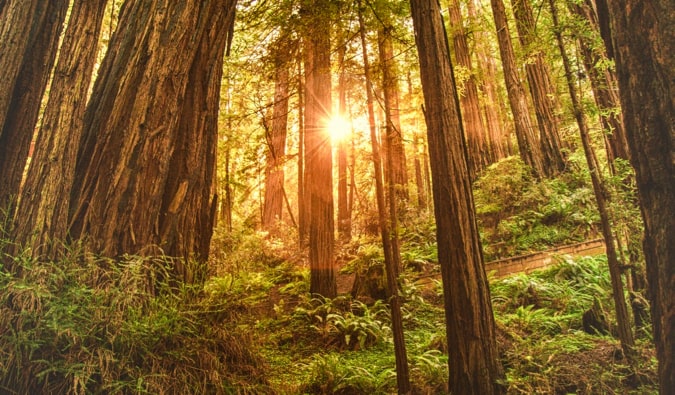
Named after famed naturalist John Muir, it’s located just 16 miles from downtown so its an easy place to visit. The place is home to over 240 acres of towering old-growth redwood trees. While the trees here are not as big as the sequoia trees in nearby Sequoia National Park, it’s nevertheless a relaxing place to visit. There are plenty of walking trails and it’s family/kid-friendly too.
18. Visit the Beat Museum
Dedicated to the Beat Generation (the 1950s counter-culture), here you’ll find original manuscripts, rare books, letters, and more from authors like Jack Kerouac and Allen Ginsberg. Founded in 2003, the museums has over 1,000 pieces of memorabilia including Ginsber’s typewriter and a first edition copy of Kerouac’s novel The Town and the City. They also hold regular events so check the website to see if anything is happening during your visit.
540 Broadway, +1 800-537-6822, kerouac.com. Open daily from 10am-7pm. Admission is $8 USD.
19. Learn at the Exploratorium
This interactive science museum has all kinds of exhibitions covering biology, gravity, light, animation, and much more. It’s very hands-on so it’s the perfect stop for anyone traveling with kids (though there are also adult-specific exhibitions too).
Pier 15, +1 415-528-4444, exploratorium.edu. Open Tuesday–Sunday from 10am-5pm. Admission is $29.95 USD.
20. Hang Out in Golden Gate Park
This massive park covers over 1,000 acres, making it 20% bigger than Central Park in NYC. Inside, you’ll find a Japanese garden, an arboretum, a museum, and lots of hiking and walking trails. Walking from end to end takes the better half a day. In the summer, it’s a popular spot to picnic, go for a stroll, and soak up the sun. Even though it sees over 24 million visitors each year, it’s never too hard to find a secluded spot for yourself.
21. Catch a Game

San Francisco locals love their sports teams, especially the Giants (their baseball team). If you’re in town during a game, be sure to head to Oracle Arena and take in the spectacle — it doesn’t get more American than this! The team is one of the longest-established and most successful in the league and you can get tickets for under $10 USD.
22. Visit the Cable Car Museum
When the cable cars launched in 1873, they were hugely popular and they changed the face of the city. To learn more and see all kinds of photos and relics from a bygone era, including some of the original cars, head to this museum. It’s not huge but it’s fun and insightful.
1201 Mason Street, +1 415-474-1887, cablecarmuseum.org. Open daily from 10am-5pm (6pm in the summer). Admission is free.
23. Tour Wine Country

If you love wine and have time to leave the city, visit the world-famous Napa and Sonoma wine regions. Napa is one of the world’s leading wine-producing area and every year over 3 million people come to taste their way around the region. Located just over an hour from the city by car, there are plenty of companies that organize day trips to Napa Valley (usually for between $99-150 USD per person). However, day tours are usually a bit rushed. If you have the time, rent a car and stay overnight.
24. Enjoy the View from Twin Peaks
For another panoramic view of the city, drive or hike up to the top of Twin Peaks. Standing 925 feet high, you’ll get a sweeping 360-degree view of the city. Come for sunset and enjoy the view. There are also lots of trails weaving around the mountains so you can hike for a couple of hours here if you wanted.
25. Take a Food Tour
This city is known for its food. If you want to cast a wide culinary net and try a lot of different foods, consider taking a food tour. Here are a few companies worth checking out if you’re considering:
- Wild SF Tours – A tasty food crawl of Chinatown and Little Italy where you can try dim sum, pizza, craft cocktail-inspired boba milk tea, and cannoli. Tickets from $69.
- Secret Food Tours – Sample the best of the Mission District, including burritos, oysters, ice cream, and more! Tickets from $79 USD.
- TasteBud Tours – A culinary exploration of Little Italy that stops off at 7 different local restaurants. Tickets from $68.50.
26. Day Trip to Oakland
Just across the Bay Bridge from San Francisco is Oakland. It’s considered the “Brooklyn” to San Francisco’s “Manhattan.” In recent years, Oakland has developed a niche for and craft beer and specialty restaurants. There are tons of bars and breweries, and they even have their own “Ale Trail” if you want to wander the city and sample its best drinks.
You can also visit Oakland Redwood Regional Park, Lake Merritt, or catch a baseball game at Oakland Coliseum. There’s a lot you can do in Oakland and you can easily spend a day or more here!
27. Visit the Asian Art Museum
This is one of the most comprehensive collections of Asian art in the world. The museum houses almost 20,000 items in its collection and you can get a free guided tour to walk you through all the highlights and special exhibits that the museum has to offer. There are both modern art exhibitions as well as historical artifacts and artwork. Check the website to see what temporary exhibitions are available during your visit.
200 Larkin St., +1 415-581-3500, asianart.org. Open Tuesday-Sunday from 10am-5pm (9pm on Thursdays). Admission is $15 USD.
28. Take a Quirky Tour or Visit a Weird Museum
San Francisco is an eclectic city to say the least so it should come as no surprise that there are a lot of unique tours and museums here. Some of the more fun and interesting tours options are:
- San Francisco Love Tours – Explore the city in a hand painted VW bus and learn about San Francisco’s counter-culture icons while listening to hippie music from the Summer of Love. Tours from $45 USD.
- GoCar Tours – Whip around the city in a go kart and see the sights as you bomb down hills (including the winding Lombard Street). Tours from $120 USD.
And, for weird / offbeat museums, visit:
- The Antique Vibrator Museum – See what sex toys from the 1800s looks like!
- The Gregangelo Museum – This “museum” is bursting with all kinds of weird decorations, themed rooms, secret passageways, hidden rooms, and all sorts of weird art and interior design.
- The Peephole Cinema – Watch short silent films through a tiny public peephole in the Mission District.
- Musée Mécanique – A collection of over 300 old arcade games from the 20th century.
While San Francisco may be known for its high cost of living, there are tons of fun things to see and do in the city that won’t break the bank. With a little planning and creativity, you can enjoy your time in San Francisco without going over budget.
And whether you’re looking for museums, nature, food, or nightlife, this city will not disappoint.
Book Your Trip to San Francisco: Logistical Tips and Tricks
Book Your Flight
Find a cheap flight by using Skyscanner or Momondo. They are my two favorite search engines because they search websites and airlines around the globe so you always know no stone is left unturned.
Book Your Accommodation
You can book your hostel with Hostelworld. If you want to stay elsewhere, use Booking.com as they consistently return the cheapest rates for guesthouses and cheap hotels. I use them all the time. My suggested place is the The Green Tortoise. It’s the best hostel in the city. It has free breakfast, pub crawls, and dinners three times a week.
Don’t Forget Travel Insurance
Travel insurance will protect you against illness, injury, theft, and cancellations. It’s comprehensive protection in case anything goes wrong. I never go on a trip without it as I’ve had to use it many times in the past. I’ve been using World Nomads for ten years. My favorite companies that offer the best service and value are:
- World Nomads (for everyone below 70)
- Insure My Trip (for those over 70)
Looking for the Best Companies to Save Money With?
Check out my resource page for the best companies to use when you travel! I list all the ones I use to save money when I travel – and I think will help you too!
Need a Guide?
San Francisco has some really great tours on offer. For an in-depth walking tour, check out Take Walks. They use expert local guides and have a super insightful (and fun) tour through Chinatown.
For something more hands-on like a segway tour, use Fat Tire Tours. They have a few different tours around the city and are a great alternative to a standard walking tour.
Looking for More Information on Visiting San Francisco?
Check out my in-depth destination guide to San Francisco with more tips on what to see and do, costs, ways to save, and much, much more!
The post 28 Things to See and Do in San Francisco appeared first on Nomadic Matt's Travel Site.

